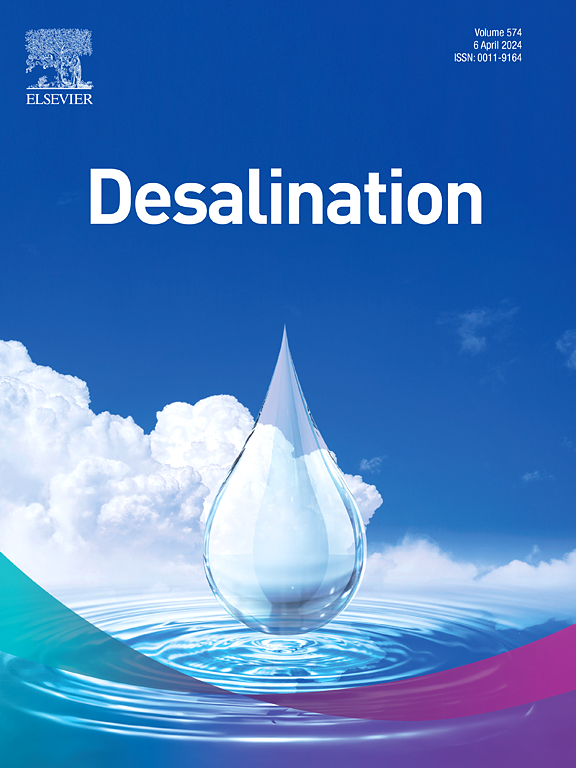Role of pH regulator on controlling the adsorption performance of LDHs type adsorbents toward Li+ from brines
IF 8.3
1区 工程技术
Q1 ENGINEERING, CHEMICAL
引用次数: 0
Abstract
Aluminum-based lithium adsorbent is a kind of bilayer hydroxide. Due to its advantages such as environmental friendliness, simple elution process and good cycling stability, it is usually regarded as one of the most effective and practical solid Li+ collectors in brine. However, the adsorbent is limited by its low adsorption capacity and fragile intrinsic structure, and its long-term cycle adsorption in real brine is restricted. Up to now, the intercalation strategies of different anions are common methods to solve the above problems. Considering the importance of pH regulation during the precipitation process, different pH regulators were designed for pH regulation, and different anions were introduced for intercalation at the same time.
A detailed study was conducted on how the intercalation behavior of different anions affects the lithium extraction performance of aluminum-based adsorbents. The results show that the adsorption capacity of the prepared LDHs adsorbent depends on the pH regulators HCl (8.4 mg/g), H2SO4 (7.2 mg/g), HNO3 (7.2 mg/g) and H3PO4 (4.4 mg/g). Among them, the adsorbent obtained by using H2SO4 as the pH regulator exhibited a capacity retention rate higher than 90 % after five desorption/adsorption cycles in real brine. The intercalation of highly negatively charged ions with larger ion radii significantly alters the interlayer spacing of the adsorbent. Although it does not contribute significantly to the adsorption capacity, it enhances the cycling stability of the adsorbent in real brine. This is attributed to the electrostatic interaction that makes the AlO6 octahedral connection tighter, thereby improving the intrinsic structure of the adsorbent's anti-interference ability against high-concentration impurity ions from the outside. Based on the structure-performance relationship of adsorbents, the control mechanism of adsorbents was summarized, and the key factors for selecting pH regulators were preliminarily proposed. This research can provide theoretical and technical guidance for the configuration and preparation of highly efficient lithium adsorbents to effectively recover Li+ from various brine resources.
pH调节剂对LDHs型吸附剂对盐水中Li+吸附性能的控制作用
铝基锂吸附剂是一种双层氢氧化物。由于其环境友好、洗脱过程简单、循环稳定性好等优点,通常被认为是盐水中最有效、最实用的固体Li+捕集剂之一。但吸附剂吸附能力低,本身结构脆弱,在实际卤水中的长期循环吸附受到限制。目前,不同阴离子的插层策略是解决上述问题的常用方法。考虑到pH调节在沉淀过程中的重要性,设计了不同的pH调节剂进行pH调节,同时引入不同的阴离子进行插层。详细研究了不同阴离子的插层行为对铝基吸附剂锂萃取性能的影响。结果表明:所制备的LDHs吸附剂的吸附量取决于pH调节剂HCl (8.4 mg/g)、H2SO4 (7.2 mg/g)、HNO3 (7.2 mg/g)和H3PO4 (4.4 mg/g)。其中,以H2SO4为pH调节剂制备的吸附剂在实际卤水中经过5次解吸/吸附循环后,容量保持率高于90%。具有较大离子半径的高负电荷离子的插入显著改变了吸附剂的层间距。虽然对吸附剂的吸附能力贡献不大,但提高了吸附剂在实际卤水中的循环稳定性。这是由于静电相互作用使AlO6八面体连接更加紧密,从而提高了吸附剂的内在结构对外界高浓度杂质离子的抗干扰能力。基于吸附剂的结构-性能关系,总结了吸附剂的控制机理,并初步提出了pH调节剂选择的关键因素。该研究可为高效锂吸附剂的配置和制备提供理论和技术指导,从而有效地从各种卤水资源中回收Li+。
本文章由计算机程序翻译,如有差异,请以英文原文为准。
求助全文
约1分钟内获得全文
求助全文
来源期刊

Desalination
工程技术-工程:化工
CiteScore
14.60
自引率
20.20%
发文量
619
审稿时长
41 days
期刊介绍:
Desalination is a scholarly journal that focuses on the field of desalination materials, processes, and associated technologies. It encompasses a wide range of disciplines and aims to publish exceptional papers in this area.
The journal invites submissions that explicitly revolve around water desalting and its applications to various sources such as seawater, groundwater, and wastewater. It particularly encourages research on diverse desalination methods including thermal, membrane, sorption, and hybrid processes.
By providing a platform for innovative studies, Desalination aims to advance the understanding and development of desalination technologies, promoting sustainable solutions for water scarcity challenges.
 求助内容:
求助内容: 应助结果提醒方式:
应助结果提醒方式:


